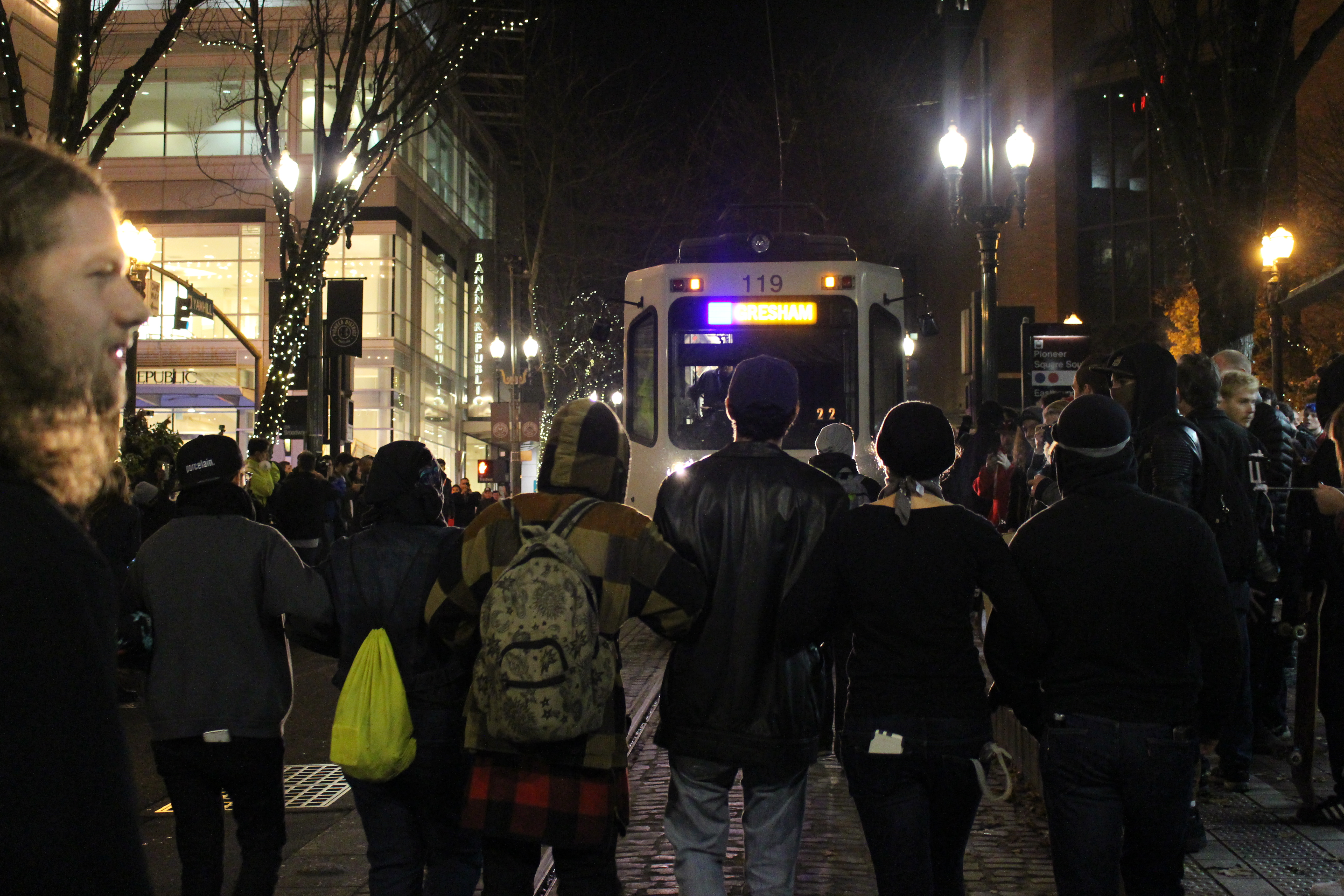In the months since nightly demonstrations began in Portland following the police killing of George Floyd on May 25, the deployment of CS or 2-chlorobenzylidene malononitrile has become a customary practice by Portland Police Bureau. Though the immediate harms of CS are well documented, the lasting impact of CS exposure is not. This is of particular concern as the menstrual health impacts of CS have come into focus. In Portland, allegations that the crowd control munitions have led to irregular menstruation have erupted on social media and on signs at the nightly protests.
CS is a chlorine containing powder that activates the TRPA1 receptor in humans. Upon contact, CS causes severe pain, irritation, burns, and nausea. Though CS is touted as a non-lethal compound, lethal toxic pulmonary damage leading to pulmonary edema has been a known risk of exposure since a study released by the British Home Office in 1969. The Centers for Disease Control and Prevention recognize that exposure to CS spray may lead to long term health effects including glaucoma, cataracts, and possibly asthma. At this time, research on the reproductive and menstrual impacts of CS exposure remains limited.
In the absence of clinical research on the menstrual health effects of CS exposure, a link can be identified by observing miscarriage data following periods of prolonged CS spray use. In 2011, Chile suspended use of CS after research conducted by the University of Chile showed that the chemical may cause miscarriages. Similarly, Physicians for Human Rights linked miscarriages in Bahrain to CS exposure in a 2012 report.
In Portland and across the United States, demonstrators exposed to CS have raised awareness of the issue of menstrual side effects by speaking out about their personal experiences. We interviewed one such individual, whose name has been changed to Sarah to protect her privacy.
PS: Before the night of the protest (May 30), did you know that you were pregnant?
Sarah: “No, I was under the impression that I couldn’t be.”
PS: You were out as a protester, but you say your exposure to CS was incidental at most?
Sarah: “Yeah, I didn’t take a cloud of it to the face or anything…. At that point I didn’t have any protective gear, I didn’t have goggles, I had a cotton face mask for COVID, but I didn’t have any proper equipment. I didn’t really know what I was getting myself into…. It didn’t go off near me, I just walked through it.”
PS: Could you walk us through the events leading up to your exposure to CS?
Sarah: “I was really far back… and I remember hearing some little pops. Far off in the distance I saw the clouds and people started backing up, some people were running, and then the clouds came forward and dispersed… that’s when I caught the whiff.”
PS: How long after your exposure to CS did bleeding begin?
Sarah: “I went out the next day to a protest…. By the end of the march I was almost doubled over, it was so painful. That night I started bleeding, but it was pretty obvious that night that it didn’t feel like a normal period. The cramps were way more intense…. The bleeding went on for two days, two days of really bad pain, really big clots… this isn’t my period, this is something weird.”
(In a supplementary message, Sarah described the unusual clotting as “lemon-sized.”)
PS: And did you seek medical attention?
Sarah: “I made a call to Planned Parenthood and I did end up going in…. Based on the timeline that I gave them… versus everything that I described to them, [Planned Parenthood] said ‘it was clear that you had a very early miscarriage.’”
PS: Could you describe what you were feeling in that moment?
Sarah: “Honestly, I was just really shocked.” “On one hand I was like, what are the odds that this happened, but I was also relieved to some degree because I don’t want to have a baby…. It was still weirdly heavy.” “It was very surreal, the whole situation was very surreal.”
PS: At what point did you link the miscarriage to CS exposure?
Sarah: “I bled from that for a few days… and had very intense pain. Somewhere around [the seventh or eighth day], I protested again and had stopped bleeding when I went to go protest.” “That night, I took a bath and while I was in the bath realized that I was bleeding into the bathtub… and I think that’s when I was like, huh, because I had definitely caught some of it again that night. I don’t think I really put two and two together 100% until that night or maybe a couple of days later when I was scrolling through Instagram and someone had posted something to their story that was a link to this article that said that in Chile they had put a ban on CS gas because so many women were having miscarriages… after I read that, that’s when it really started going.”
PS: Are there any points about the lack of research in this area that you want to transfer to the public?
Sarah: “I think it’s messed up that myself and all of the other women who are experiencing this have to play detective on our own and piece together what’s happening to our bodies when that’s not our job, especially when there are really no resources for us.”
“It’s becoming known that this is a thing, but it’s not actually being acknowledged by anyone with authority.”
In a supplemental journal of her experience, Sarah described irregular menstrual symptoms corresponding with each protest at which she was exposed to CS. She noted that symptoms lasted approximately one and a half months, paused after her normal menstrual cycle would have taken place, and resumed after the next protest she attended four days later.
On September 10, Mayor Ted Wheeler instituted a ban on the use of CS at the ongoing demonstrations in Portland.




